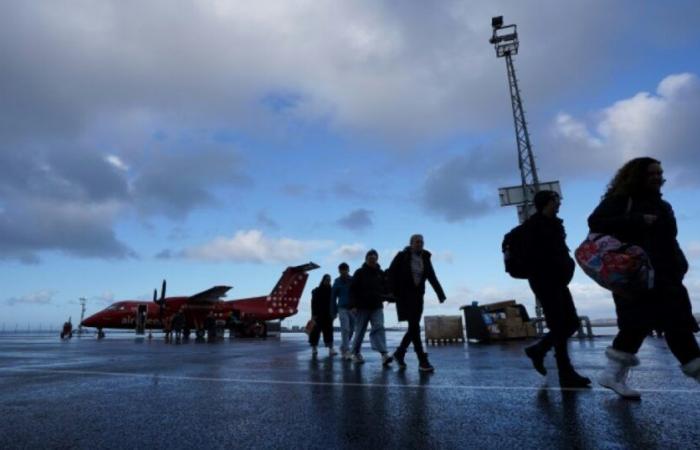With a runway now capable of accommodating long-haul flights, Nuuk airport, the capital of Greenland, wants to bring the Arctic island closer to the rest of the world and boost tourism, at the risk of saturating its infrastructure in a fragile ecosystem. .
From November 28, tourists and locals will no longer have to stop further north, at Kangerlussuaq, a former American military base which was the only airport able to accommodate long-haul flights and therefore the obligatory crossing point to and from 'stranger.
“In the past it has been very difficult to travel to Greenland and with the new airports [ndlr: celui d’Ilulissat, plus au nord, ouvre en 2026]this will completely change the infrastructure to get there,” explains an airport spokesperson, Milan Lund Vraa.
Nuuk, where a third of the 57,000 inhabitants of this autonomous Danish territory reside, will have to increase its reception capacities to benefit from it.
“There are a lot of tourists in Nuuk, and there are going to be so many that there won't be enough places for them,” predicts Gideon Lyberth, mayor of Maniitsoq, a little further north, who hopes to be able to take advantage from the surplus of visitors who came to admire the beauty of the fjords and the raw landscapes.
The number of tourists has already been increasing by 9% per year for several years, notes Mr. Lund Vraa.
A recent report estimates that the Greenlandic capital will need new hotel rooms from September 2027 if the number of tourists grows by 5% per year. It will also certainly be necessary to open new restaurants, as Nuuk only has 15 restaurants.
This rate could be largely exceeded thanks to connections with Denmark and North America, with a direct Nuuk-New York twice a week.
The development of the airport “represents a huge opportunity for adventure-loving travelers who want to be the first to visit a new and unique destination”, believes the research director of ATTA, the federation of adventure tour operators, Heather Kelly.
– “Venice of Greenland” –
In Maniitsoq, 2,500 inhabitants on a rock, we are banking on tourists.
“We need it. In my city, there are fewer and fewer people, people are moving to bigger cities, with more jobs,” explains a sailor, Michael.
In this “Venice of Greenland”, known for its colorful houses on the side of a rock, local operators are starting out timidly, often as a couple or family.
“In recent years, we have seen that young people have started to become tourist operators,” says the mayor.
A tourism “boom”, as neighboring Iceland has experienced since the 2010s, will take time.
“All the infrastructure has to be in place first, and it's not something that's going to happen overnight,” said Taatsi Fleischer, a spokesperson for the Arctic Circle organization, which encourages and supports entrepreneurs. from West Greenland.
It is a “step” which should make the daily lives of Greenlanders easier, he judges.
But what do they think of tourists?
The attitude towards cruise ships, which are very polluting, is ambivalent and a new law could prohibit them from certain areas.
The tourists dumped by these floating buildings “come and walk around town. I don't know much about them because they don't talk to people,” explains Michael, a sailor from Maniitsoq.
He looks more favorably on travelers who come by plane, who stay there longer.
– Disappearing landscapes –
However, Arctic tourism is directly affected by climate change.
Skiing, hiking and cruises “are directly impacted by glacial retreat and associated processes which complicate access to sites”, warns Emmanuel Salim, lecturer in geography at the University of Toulouse.
“Developing such a destination today requires thinking now about the image and reality of the future of a post-Arctic landscape, in which snowy reliefs, polar bears and ice floes – which have shaped the image of these places – are no more,” he adds.
Locals warn of the need for reasoned tourism development.
“I think Greenland is not ready for mass tourism, especially because of the infrastructure we have,” said Paaliit Mølgaard Rasmussen, a resident of Nuuk.
“The hospital is understaffed and the hiking trails are not maintained,” she notes.
Developing tourism will only work by integrating it into the local economy, defends academic Michael Hall, a tourism specialist.
“If we want to develop tourism infrastructure, it must be part of long-term, quality development to make it resistant to environmental changes,” he says.
In 2023, tourism brought 1.9 billion crowns (250 million euros) to Greenland, almost 10% of Greenland's GDP of 20.3 billion.






